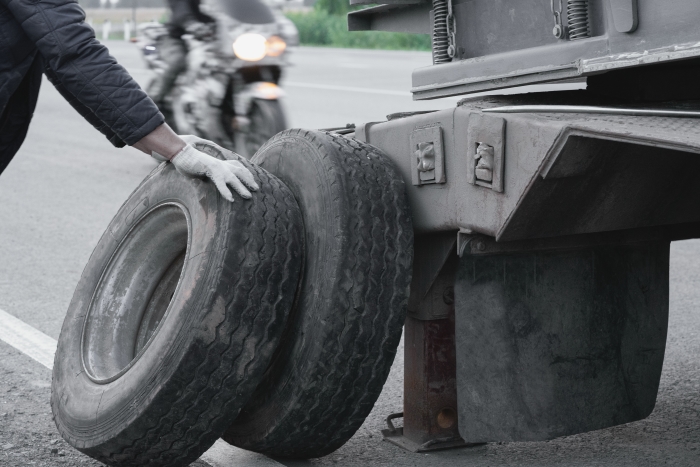Every day, oversized trucks navigate our roadways carrying vital cargo. While these behemoths of the road keep our economy moving, their immense size and weight present a unique set of safety challenges. Unfortunately, accidents involving oversized trucks can have devastating consequences. Thankfully, trucking companies can take proactive steps to significantly reduce the risk of these incidents.
Learn more about how trucking companies can implement safety protocols and procedures to minimize the likelihood of oversized truck accidents. By prioritizing safety through robust procedures and cutting-edge technology, trucking companies can protect their drivers, the public, and their bottom line.
Understanding the Risks of Oversized Truck Accidents
Oversized trucks, also known as wide-load or excessive-load vehicles, exceed standard size and weight limitations. These dimensions can create significant challenges:
- Limited Visibility
- Increased Stopping Distances
- Shifting Cargo
- Unstable Handling
Investing in Driver Training
Driver training is the cornerstone of any effective safety program. For oversized truck operators, specialized training is crucial to ensure they possess the necessary skills and knowledge to navigate the complexities of these vehicles.
Route Planning and Permitting
Drivers should be thoroughly versed in planning routes that accommodate oversized loads, considering factors like road width, bridge clearances, and potential traffic congestion. They should also be skilled in obtaining the necessary permits for travel, ensuring compliance with all local, state, and federal regulations.
Vehicle Familiarization
Training should cover the specific handling characteristics of oversized trucks, including pre-trip inspections that go beyond standard checks to encompass unique components like extended axles and specialized lighting systems. Drivers should be proficient in proper loading techniques to ensure balanced weight distribution and cargo securement using the appropriate tie-downs, straps, and other equipment for the specific load. Additionally, training should address safe operation under various road conditions, such as navigating tight corners, handling strong winds, and maintaining control on uneven terrain.
Defensive Driving Techniques
Emphasis should be placed on defensive driving skills that go beyond standard practices. Drivers of oversized trucks should be adept at anticipating potential hazards created by their vehicle's size and weight, such as limited visibility for other drivers and increased stopping distances. They should be able to react appropriately to other drivers' actions, including aggressive maneuvers or inattentiveness.
Safety Regulations
Drivers must be kept up-to-date on all federal and state regulations governing oversized truck operation. This includes understanding size and weight limitations for specific roadways, signage requirements for oversized loads, and safety protocols for maneuvering through traffic circles, construction zones, and other challenging situations.
Enhancing Vehicle Maintenance
Regular and meticulous maintenance is paramount for oversized trucks. Any mechanical malfunction can be catastrophic when dealing with such a massive vehicle.
Trucking companies should implement a rigorous maintenance program that includes:
- Pre-trip and Post-trip Inspections: Drivers should be trained to conduct thorough inspections before and after each trip, identifying any potential issues with the vehicle or cargo securement.
- Preventative Maintenance Schedules: Vehicles should undergo regular preventative maintenance according to manufacturer's recommendations and industry best practices.
- Safety Technology Integration: Consider equipping trucks with advanced safety features such as blind-spot monitoring, lane departure warnings, and automatic emergency braking systems.
Enforcing Safe Loading Practices
Ensuring the safe transport of oversized cargo starts long before the truck ever hits the road. Proper cargo loading and securement are essential to prevent accidents and protect everyone on the road. Trucking companies that prioritize safety should establish clear procedures for these crucial steps.
Load Weight Distribution
Cargo should be distributed evenly to avoid weight imbalances that can affect vehicle handling. Uneven weight distribution can cause the truck to sway or pull to one side, increasing the risk of rollovers and loss of control, especially during turns or on uneven terrain.
Securement Techniques
Drivers must be trained on proper use of tie-downs, straps, and other securement devices to ensure cargo remains stable throughout the journey. Training should cover different types of securement equipment and their appropriate applications for various cargo shapes, sizes, and weights. Additionally, procedures should address proper inspection and maintenance of securement equipment to ensure their reliability.
Overload Prevention
Strict policies should be in place to prevent exceeding weight limitations. Overloaded trucks experience increased strain on brakes, tires, and suspension systems, raising the risk of mechanical failure and accidents. Companies should implement weight-monitoring protocols and empower drivers to refuse hauling loads that exceed legal limits or the truck's capacity.
Steps for Building a Culture of Safety
A safety-focused company culture is vital for long-term success. Trucking companies can foster a culture of safety by:
- Establishing Safety Policies: Clear and comprehensive safety policies should be communicated to all employees, including drivers, loaders, and management.
- Incentivizing Safe Practices: Rewarding drivers for adhering to safety protocols and reporting potential hazards can encourage a safety-conscious environment.
- Open Communication: Employees should feel comfortable reporting safety concerns without fear of retribution. Regular safety meetings can promote open communication and problem-solving.
- Data-Driven Decision Making: Companies should analyze accident data to identify trends and implement targeted safety initiatives to address them.
By implementing these preventative measures, trucking companies can significantly reduce the risk of oversized truck accidents. Investing in driver training, rigorous vehicle maintenance, safe loading practices, and a culture of safety not only protects drivers and the public but also demonstrates a commitment to responsible business practices.
Contact BCH Law Group Today
Bailey Cowan Heckaman stands ready to assist you in your battle if you have been involved in a truck accident. Our experienced legal team can advise on preventative measures, investigate accidents, and represent your company's interests if necessary.
Contact us today for your free consultation.

